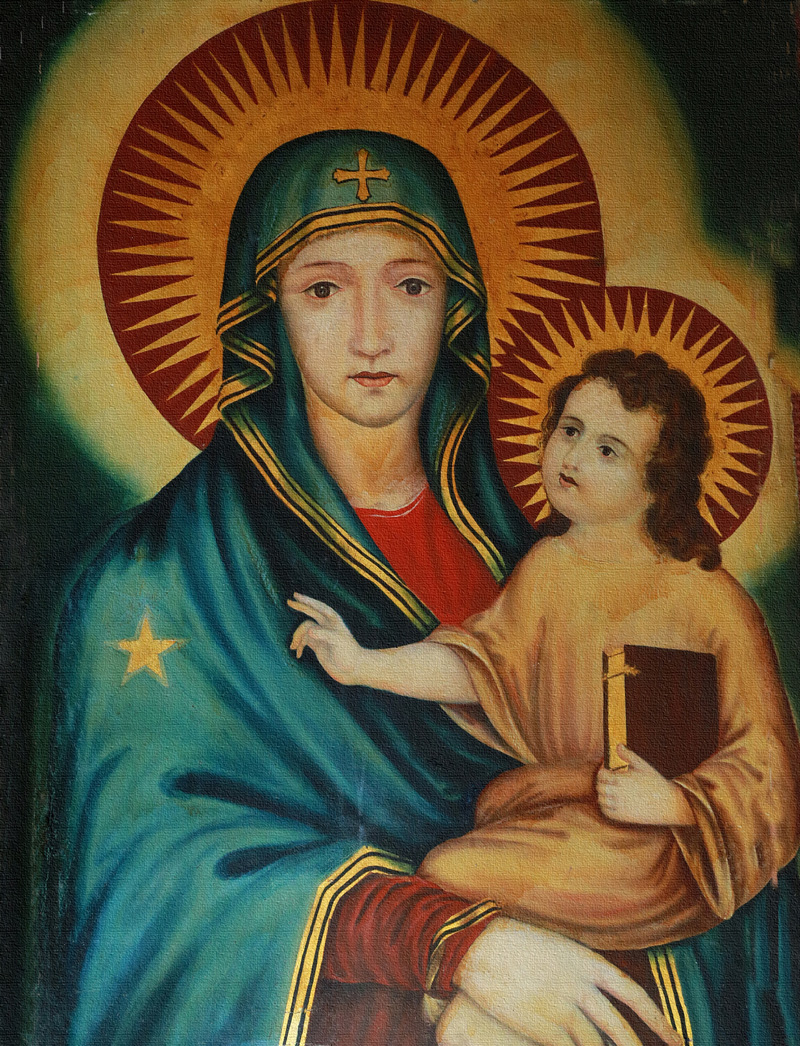Christian Art
Blessed Virgin and Child at Pallippuram
Tempera and gold on wood
Call Number : CA-05-06
Description:
This icon is the centerpiece on the main altar of St. Mary’s Forane Church at Pallippuram. According to tradition, the St. Mary’s church has a historical link to the early Christian community that St. Thomas the Apostle established in the adjacent region of Kokkamangalam. The remnant of an ancient wooden cross that is especially venerated in this church is considered to be material evidence to this extraordinary link.
Similar to the legends associated with the icons of the same nature among the Christians in the Middle East, the parishioners at Pallippuram refer to St. Luke the Evangelist as the author of this painting. The color scheme is quite similar to that of early icons of the Blessed Virgin elsewhere in the world, including the one at St. Thomas Mount, Mylapore, in Chennai, India. There are, however, many striking differences. The pleasant demeanor of the compassionate-looking mother and the wide-eyed, curly-haired, chubby-faced, cherry-lipped, and almost-smiling son is unique. The child is old enough to hold a leather-bound manuscript in his left hand; he raises his right hand to bless the devotees. Both the mother and the son have an interactive gaze that engages the onlooker.
As, probably, the earliest Marian shrine in Kerala, St. Mary’s Forane Church has a special place in the history of Christianity in India. The church was home for the first indigenous seminary of the St. Thomas Christians that the saintly Palackal Thoma Malpan (c.1780-1841) established. The mortal remains of the Malpan, who was also a founder of the Carmelites of Mary Immaculate (C.M.I) and preceptor of Saint Kuriakose Elias Chavara (1805-1871), rest on the southern side of the main altar. Bishop Raphael de Figueredo (d. 1695) who was half Indian and half Portuguese, and Coadjutor (auxiliary with the right to succession) of Mar Chandi Parampil (d. 1687), the first native bishop of the St. Thomas Christians, is buried on the northern side of the main altar. St. Chavara received priestly formation at the seminary here and, after ordination, also served as vicar for about two years. The Baroque-style architecture of the church with elaborate decorations of altars as well as the various aspects of the celebration of the principal feast of the parish (the assumption of the Blessed Virgin) are colorful testimonies to the confluence of cultures that took place in this region over the centuries.


